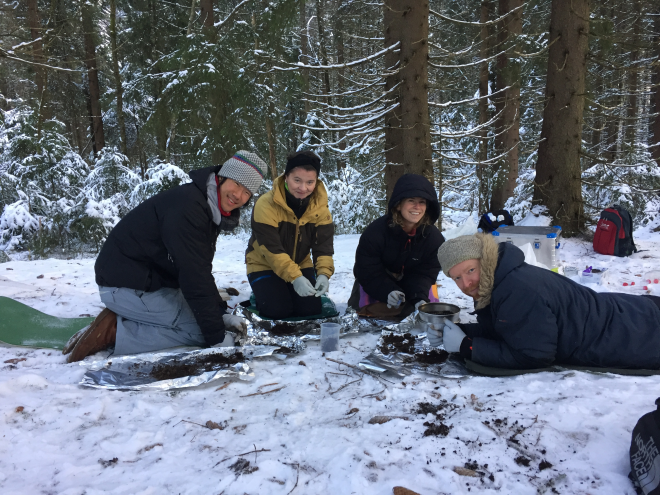About the project
Boreal forest soils store enormous amounts of carbon and different types of fungi play key roles in the flow and dynamics of carbon in these ecosystems. In the MycoSoil project we will investigate the structure and activity of fungal communities in boreal forest soils and investigate the functional roles of soil fungi. The project relies upon the unique availability of two long-term forest survey projects with geo-referenced plots for which extensive metadata sets are available, covering properties of the tree layer, ground vegetation and soil carbon content. The pre-existing datasets will be synthesised with genetic data obtained using novel DNA sequencing technologies, as well new recordings of various soil factors.
Objectives
The synthesis of broad-scale genetic and environmental datasets in the MycoSoil project will provide a unique opportunity to gain new insight into the dynamic relationships between belowground fungal communities, above-ground plant communities and forest productivity and carbon sequestration. The project represents an ambitious and interdisciplinary synthesis of diverse research fields such as microbial community ecology, forest ecology and history, vegetation and soil science, metabarcoding and metatranscriptomics, as well as bioinformatics and biostatistics.
Background
Boreal forests cover about 11% of the land surface of the Earth and make up the world’s second largest terrestrial biome. The boreal region holds a large amount of the world’s carbon (C), in living trees, forest vegetation, and soil microbial biomass, as well as stored in the soil as dead organic matter. The wide distribution and the fact that they store large stocks of carbon make these ecosystems globally important. Understanding their functioning is important for any models of their potential development in response to the ongoing climate change. The importance of the topic is illustrated by the recent attention in Norwegian media. Soil fungi are highly important in the functioning of these ecosystems, having diverse functions as decomposers of organic material, mycorrhizal symbionts, as well as pathogens. The litter-bound nutrients are mainly re-cycled through fungal decomposition processes and fungal respiration releases C from dead organic matter into the atmosphere. Saprotrophic fungi are most abundant at and in the relatively recently shred litter components on the surface of the forest floor, where organic C is mineralized.

